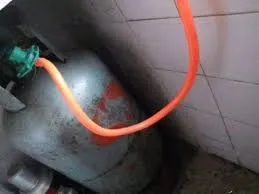335345435
Jul . 30, 2024 16:01 Back to list
Choosing the Right Hose for Safe and Efficient LPG Gas Applications and Installations
Understanding LPG Gas Hoses Key Considerations and Safety Measures
Liquefied Petroleum Gas (LPG) is a widely used fuel for cooking, heating, and various industrial applications. The efficiency and safety of LPG systems depend significantly on the quality of the hoses used to transport the gas. In this article, we will explore the various aspects of LPG gas hoses, including their types, specifications, maintenance, and safety considerations.
Types of LPG Hoses
LPG hoses are designed to convey the gas from storage tanks to appliances or equipment safely. They come in different types, material compositions, and specifications to suit various applications. The most common types are rubber hoses, PVC hoses, and bonded hoses.
1. Rubber Hoses These are the most versatile and widely used LPG hoses. They are flexible, durable, and resistant to weather conditions. Rubber hoses can withstand high pressures and are often used for both high-pressure and low-pressure applications.
2. PVC Hoses Polyvinyl chloride (PVC) hoses are lightweight and resistant to chemicals. While they are less flexible than rubber hoses, they are often used for specific applications where rigidity is required. PVC hoses are not typically recommended for high-pressure applications.
3. Bonded Hoses These are constructed by bonding multiple layers of different materials, providing strength and flexibility. They are designed to withstand extreme conditions and are often used in industrial settings.
Specifications and Standards
When selecting an LPG gas hose, it is crucial to consider several specifications. The hose must be rated appropriately for the maximum pressure it will encounter and must meet relevant safety standards. This includes certifications from organizations like the Underwriters Laboratories (UL) or the American National Standards Institute (ANSI).
hose for lpg gas

The size of the hose is also important. A properly sized hose ensures optimal flow and helps prevent leaks. For residential applications, hoses typically range in diameter from 1/4 inch to 1/2 inch, while industrial applications may require larger diameters.
Maintenance of LPG Hoses
Proper maintenance is essential to prolong the life of LPG hoses and ensure safety. Regular checks should be performed to look for signs of wear, such as cracks, bulges, or punctures. Hoses should not be exposed to harsh chemicals or extreme weather conditions, as these can degrade their integrity.
It’s also important to ensure that hoses are not subjected to sharp bends or kinks, which can restrict gas flow and lead to potential leaks. If a hose shows any signs of damage, it should be replaced immediately.
Safety Considerations
Safety is paramount when working with LPG. Leaks can lead to serious accidents, including explosions. Therefore, it is essential to use high-quality hoses that are specifically designed for LPG applications. Furthermore, installation should be carried out by qualified professionals who can ensure all fittings and connections are secure.
Users should also familiarize themselves with the proper procedures in case of a gas leak. This includes knowing how to turn off the gas supply, ventilate the area, and whom to contact for emergency services.
In conclusion, LPG gas hoses play a critical role in the safe and efficient transport of liquefied petroleum gas. By understanding the different types, adhering to specifications, conducting regular maintenance, and following safety guidelines, users can minimize the risks associated with LPG applications. Investing in quality hoses and being proactive in maintenance can enhance safety and performance in both residential and industrial settings.
-
SAE 100 R17 Black Smooth Cover Hydraulic Hose
NewsMar.07,2025
-
SAE 100 R17 Black Smooth Cover Hydraulic Hose
NewsMar.07,2025
-
SAE 100 R17 Black Smooth Cover Hydraulic Hose
NewsMar.07,2025
-
SAE 100 R17 Black Smooth Cover Hydraulic Hose
NewsMar.07,2025
-
SAE 100 R17 Black Smooth Cover Hydraulic Hose
NewsMar.07,2025
-
steel wire braided hydraulic hose
NewsMar.07,2025



